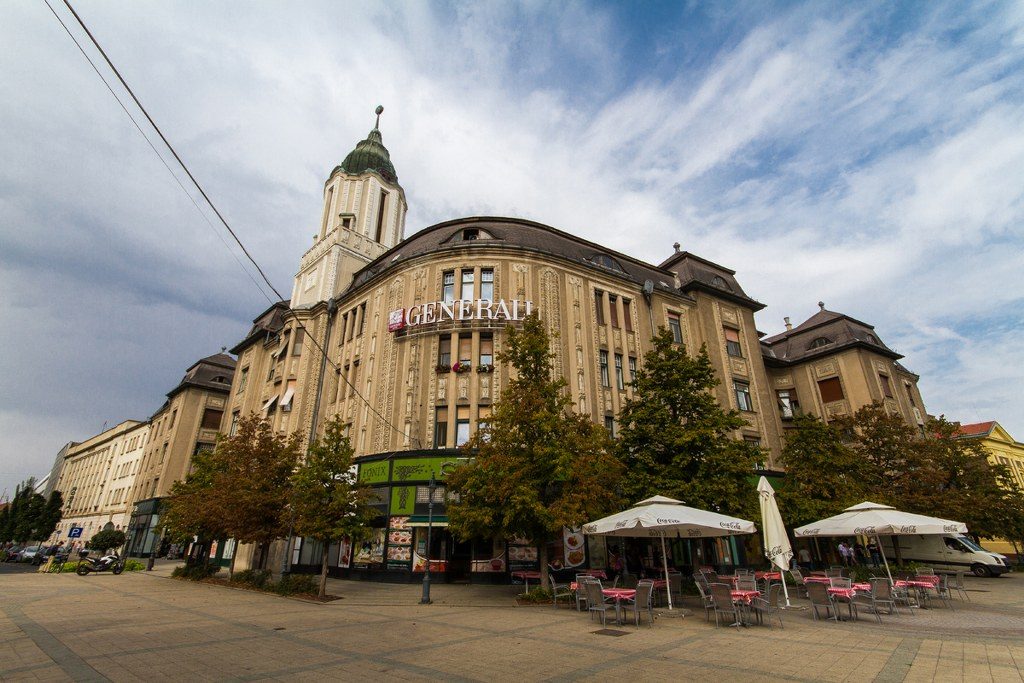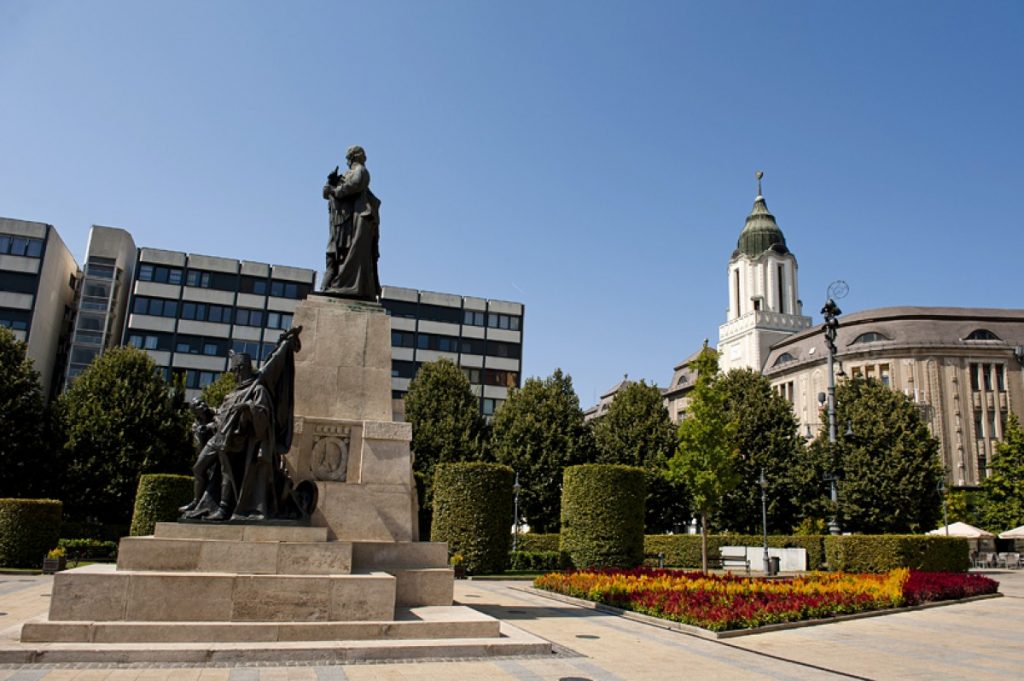On one corner of Kossuth Square, the street Hatvan Utca (translates to 60 street) begins. The street was unimaginatively named after the fact that the road provided access to 60 new plots, – thirty plots were measured on each side of the road for building new houses in the 15th century. Today, still located at the beginning of the road, on the No.1 plot is situated the church tenement house known as Bishop’s Palace.
In Hungary, a palace might not be what you might imagine. At the beginning of the 20th century, buildings that were large and two-story houses were referred to as “palaces”, and so it is probably for this reason why the building was named as a “palace”. The reality is that Bishop’s palace is was actually a high-end apartment building.

One apartment became the episcopal residence Péter Méliusz Juhász.
Originally the building was built as an apartment building of the Reformed Great Church. The eclectic-neo-baroque style building was built in 1911-13 according to the plans of Zoltán Bálint and Lajos Jámbor, architects from Budapest. The sculptural works were made by András Tóth, the father of the poet Árpád Tóth.
Containing more than one hundred apartments the building’s first inhabitants moved in 1912. Over the years several well-known celebrities from Debrecen lived in the apartment building.
The inhabitants of the house were, among others, Lajos Ady – the brother of Endre Ady -; Zoltán Jánosi, pastor, writer, politician, Secretary of State for Home Affairs of the Berinkey Government; Géza Juhász, literary historian, Csokonai researcher; István Szabó, the historian; János Dienes Munkácsy Prize-winning painter and teacher; as well as Elek Szabó – father of writer Magda Szabó, and last but not least, the mayor’s secretary.
One of the studio apartments was rented by architect Alfred Hajós for a few years after he and his partner won the tender for the building of the Golden Bull Hotel.
László Holló and Oszwald Toroczkai, drawing teachers and painters, also rented a joint studio apartment in the building in October 1914.
One interesting point about the Bishop’s Palace building was that it had its own water tower, which has remained for 100 years, next to the towers of the Reformed Great Church. Below the tower, you can still see the coat of arms of the Reformed Church, held by angels.
